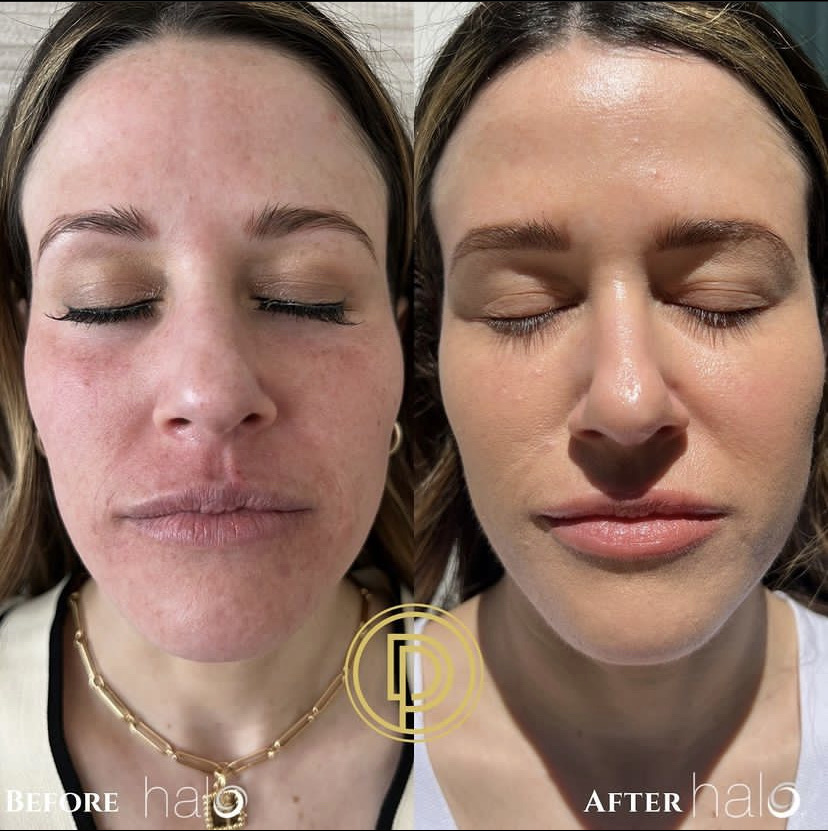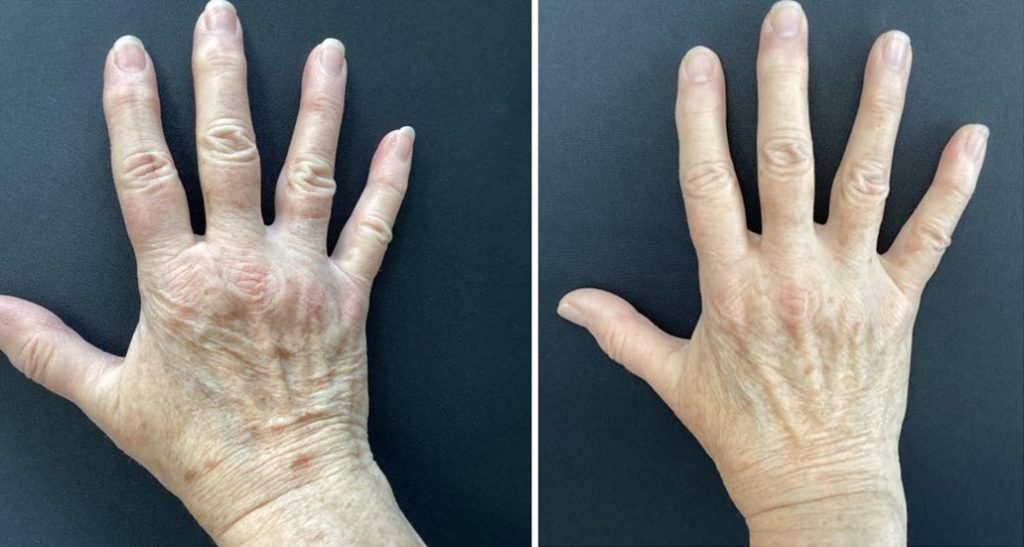Laser resurfacing is one of the safest non-surgical treatments to stave off premature signs of aging and counteract the effects of UV damage. Whether you’re having a mini laser treatment with minimal to no downtime, or a deeper resurfacing that requires a recovery period, these procedures do more than improve the appearance of your skin. Laser resurfacing targets underlying support structures for gradual improvements in skin elasticity and firmness.
The frequency of laser resurfacing treatments will depend on the type of device being used and the goal of the procedure. For example, patients with extensive sun damage may opt for a more aggressive HALO laser treatment that targets multiple skin concerns in one go. Deeper resurfacing procedures will require more downtime, but the results will last longer.
Deeper Resurfacing Laser Treatments
For example, a laser resurfacing treatment with the BBL Halo laser, which uses ablative and non-ablative energy, may only be necessary every one to three years. This dual-wavelength device addresses discoloration, fine lines, wrinkles, scarring, rough texture, blotchy skin, and other signs of photo-aging. Impressive results are visible after one session and continue to improve for 6 months as new collagen is generated in the skin.
Ablative wavelengths penetrate deeper layers of the skin, inducing the natural healing response. Non-ablative energy targets textural imbalances, enlarged pores, and uneven tone. Halo’s state-of-the-art hybrid technology means patients need fewer treatments to see dramatic improvements.

Milder Laser Treatments & Prejuvenation
Laser resurfacing with BBL (Broad Band Light) therapy is a less aggressive way to correct photo-damaged skin on a cellular level. The BBL HERO gently heats the upper layers of the epidermis to lighten hyperpigmentation and minimize redness and textural irregularities. Improvements in skin tone, clarity, and texture are evident in two to three weeks after a BBL HERO treatment. However, since this is milder phototherapy, two to three sessions are needed to see optimal results. The intervals between treatments are usually four to six weeks.
Younger patients in their 20s and 30s looking to prevent wrinkles, age spots, and sagging skin are increasingly turning to laser treatments as a preventative measure. In the world of dermatology, it’s known as prejuvenation. In this context, your dermatologist may recommend a milder laser treatment like the mini HALO once every 3-4 months to help trigger collagen production and activate anti-aging genes. Quarterly laser treatments will maintain skin health, elasticity, and volume.
In terms of skin health and appearance, it’s better to prevent wrinkles and sun spots from developing rather than attempting to turn back the clock.
The frequency of laser resurfacing treatments needed will ultimately depend on your skin type, the kind of laser technology used, and whether it’s done to delay signs of aging or restore sun-damaged skin.

Laser Resurfacing in Dallas
Lasers can help preserve a youthful, healthy complexion or counteract the tell-tale signs of the aging process. Whatever your concerns or goals, our board-certified dermatologists can customize a treatment plan accordingly. Book a Dallas dermatology appointment to learn more about our laser resurfacing treatments and how often you’ll need them to maintain a youthful glow.
